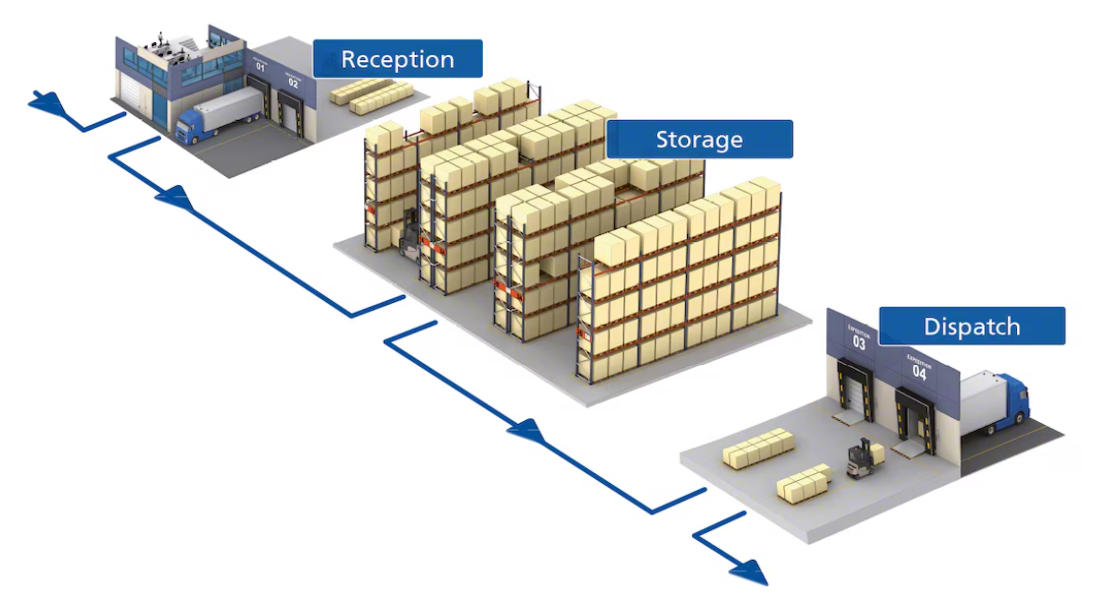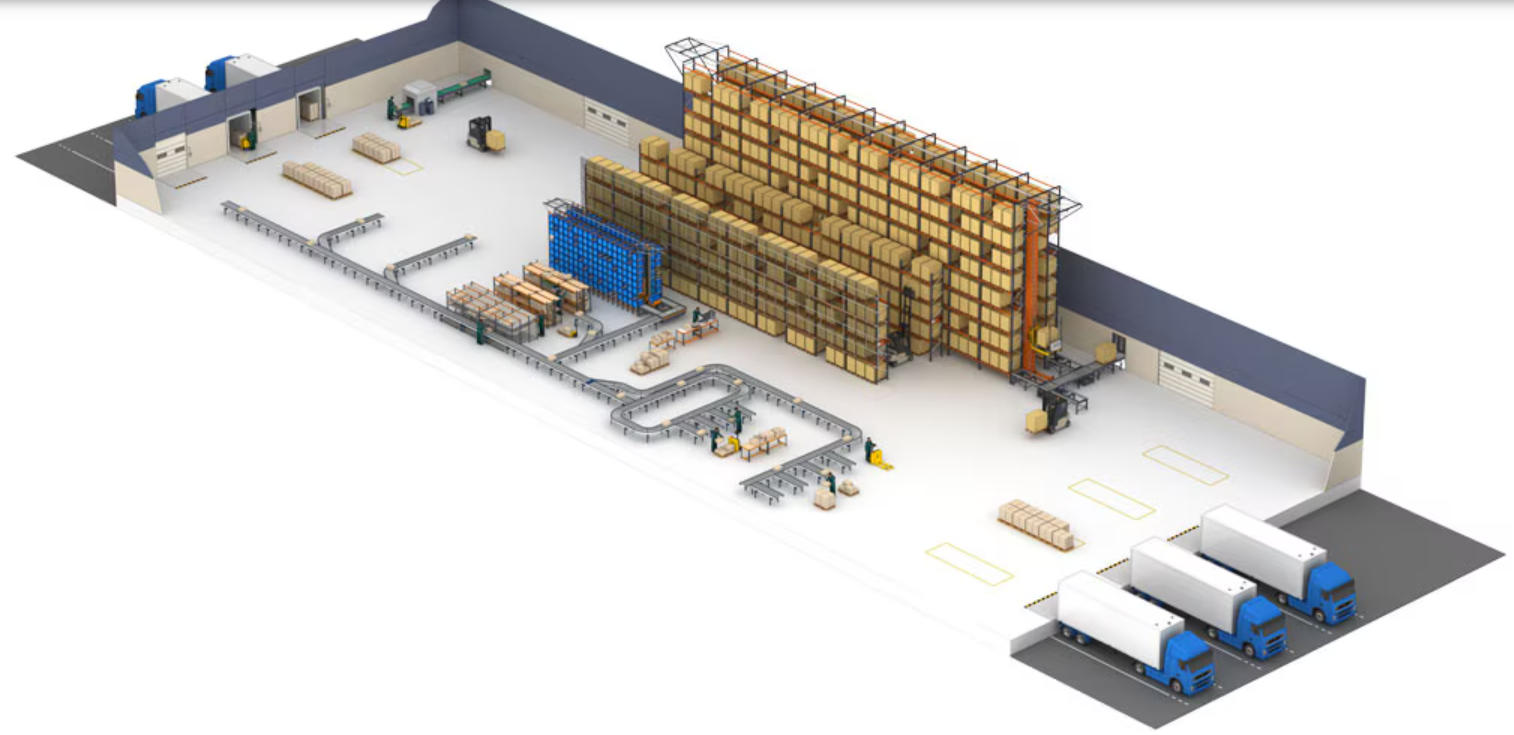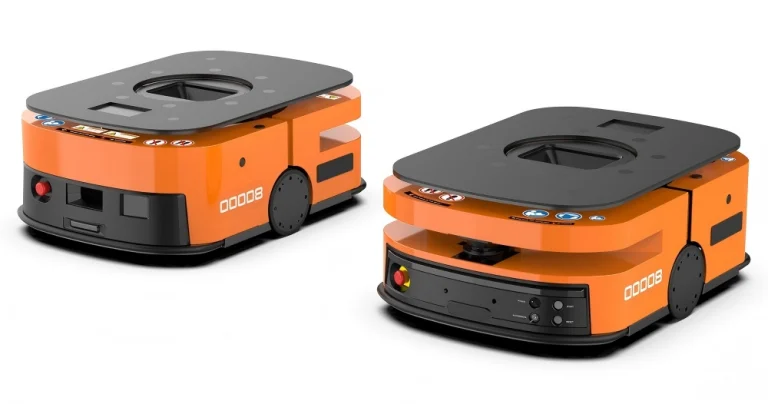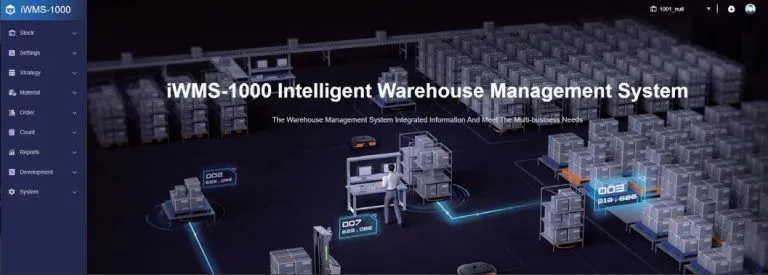
В современном быстро развивающемся мире логистики и производства сохранение конкурентоспособности означает снижение затрат, не жертвуя эффективностью. А Интеллектуальная система управления складами (iWMS) Это больше не просто фантастическое дополнение — это изменение игры для компаний, стремящихся упростить операции и сэкономить деньги. От сокращения затрат на рабочую силу до повышения точности инвентаризации, iWMS может превратить ваш склад в тонкую, среднюю, прибыльную машину. Давайте погрузимся в пять ключевых преимуществ экономии затрат от внедрения iWMS, с реальными примерами и представлениями лидеров отрасли, таких как Wesar и Hikrobot.
Почему экономия затрат важна в складском хранении
Склады являются основой таких отраслей, как электронная коммерция, производство и розничная торговля, но они также являются печально известными источниками затрат. Ручные процессы, человеческие ошибки и устаревшие системы могут быстро потерять деньги. Согласно отраслевым данным, затраты на труд могут составлять до 65% оперативного бюджета склада, в то время как инвентарные ошибки могут привести к потерям в размере 2-10% дохода ежегодно. iWMS решает эти проблемы напрямую, автоматизируя задачи, уменьшая количество ошибок и делая каждый квадратный фут вашего склада более трудящимся.
Вот как iWMS обеспечивает измеримую экономию, поддерживаемую реальными приложениями и жесткими цифрами.
1. Снижение затрат на труд за счет автоматизации
Труд часто является самым большим расходом на складе. Набор, подготовка и удержание квалифицированных работников сложны, особенно в отраслях с высоким оборотом, таких как логистика. iWMS в сочетании с автономными мобильными роботами (AMR) может выполнять повторяющиеся задачи, такие как сбор, сортировка и транспортировка товаров, освобождая вашу команду от более ценной работы.
Как это работает
iWMS-1000 от Wesar интегрируется с AMR для автоматизации обработки материалов. Например, в рамках проекта FAW Jiefang Carrying Project было развернуто более 200 латентных мобильных роботов (LMR) для выполнения входящих, сборных и поставочных задач на линии. Результат? Повышение эффективности логистики на 55% и значительное сокращение рабочего времени. Работникам больше не приходилось ходить по складу или ручной отслеживания инвентаризации, сокращая сверхурочные и ошибки, связанные с усталостью.
Экономии
- Сокращение потребностей в штатном расписанииАвтоматизация может уменьшить кадровые потребности на 20-40%, в зависимости от размера склада и сложности.
- Снижение расходов на обучениеСистемы AMR и iWMS требуют минимальной подготовки оператора по сравнению с ручными процессами.
- Меньше травм на рабочем местеПри выполнении тяжелых или повторяющихся задач АМР снижают риск травм, снижая затраты на компенсацию работников.
Забавный фактЯ однажды посетил склад, где рабочим было так облегчено, что AMR взяли на себя тяжелые работы, что они прозвали своих роботов «Спасители жизни». Речь идет не только о деньгах - автоматизация также может повысить моральный дух!
2. Минимизация ошибок инвентаризации и отходов
Неправильное управление запасами является молчаливым убийцей прибыли. Неправильно размещенные предметы, избыточные запасы или отсутствие запасов могут привести к потере продаж, избыточным транспортным расходам или упущенным товарам. iWMS обеспечивает видимость в режиме реального времени и точный контроль за инвентаризацией, гарантируя, что вы точно знаете, что есть под рукой и где он расположен.
Реальное воздействие
Возьмем в качестве примера проект интеллектуальной логистики технологии Guilin Kaifa. Внедрение iWMS-1000 позволило складу повысить эффективность сбора на 30% и снизить нагрузку логистического персонала на 40%. Уникальное управление кодом системы и синхронизация данных в режиме реального времени устранили ошибки в отслеживании сырья и готовых товаров, сэкономив тысячи потенциальных отходов.
Числа
| Метрический | Ручной процесс | С помощью iWMS |
| Точность инвентаризации | ~90% | 99%+ |
| Показатель ошибок выбора | 2-5% | < 0.5% |
| Снижение избыточных запасов | Минимальный | До 25% |
- Снижение ошибок: Точное отслеживание уменьшает количество заблуждений и неправильных отгрузок.
- Минимизация отходовУмные алгоритмы, такие как распределение холодного-горячего хранения iWMS, предотвращают переполнение медленно движущихся элементов.
- Более быстрое время ответаДанные в реальном времени помогают менеджерам решать проблемы с акциями до их эскалации.
3. Максимизация использования складского пространства
Складское пространство не дешево. Независимо от того, арендуете ли вы или владеете, каждый неиспользованный квадратный фут - это деньги. iWMS, часто в сочетании с автоматизированными системами хранения и извлечения (ASRS) или AMR, оптимизирует пространство, используя вертикальное хранение и упрощая макеты.
Тематическое исследование: Шунде VMI Smart Warehouse
В проекте Shunde VMI Smart Warehouse Wesar использовал симуляционный анализ для оптимизации макета входящих и выходящих доков. Интегрировав iWMS-1000 с AMR, склад максимизировал вертикальное пространство и увеличил плотность хранения на 50%. Это означало, что можно было хранить больше товаров без расширения объекта, сэкономив значительные затраты на недвижимость.
Почему это экономит деньги
- Более высокая плотность храненияASRS и AMR позволяют укладывать товары выше и более плотно, снижая потребность в дополнительном площади на поле.
- Оптимизированные макетыИнструменты симуляции, такие как WMSIM Wesar, анализируют макеты сайта, чтобы найти наиболее эффективные конфигурации.
- Снижение расходов на арендуМаксимализируя существующее пространство, предприятия могут задержать или избежать дорогостоящих расширений.
Про-советЕсли ваш склад чувствует себя тесным, не спешите арендовать больше места. iWMS часто может разблокировать скрытую мощность, о которой вы не знали.
4. Повышение оперативной эффективности
Время – это деньги, и нигде это не так, как на складе. iWMS упрощает такие процессы, как сбор, упаковка и отправка, обеспечивая быстрое перемещение товаров от дока до доставки. Интегрируясь с AMR и системами планирования, он минимизирует время простоя и поддерживает операции.
Пример: проект Sunrise Smart Logistics
В рамках проекта Sunrise Smart Logistics под управлением iWMS-1000 было развернуто 325 LMR и три станции обмена батареями. Система обрабатывала 15 000 линий заказов в день, при этом каждая рабочая станция обрабатывала более 250 линий в час. Этот уровень эффективности сократил время обработки и уменьшил необходимость в дополнительных сменах, непосредственно влияя на результаты.
Ключевые преимущества
- Более быстрая пропускная способностьAMR и iWMS могут увеличить скорость сбора в 2-3 раза по сравнению с ручными методами.
- Снижение времени простояУмное планирование гарантирует, что роботы и рабочие всегда выполняют свои задачи, избегая узких мест.
- МасштабируемостьСистемы iWMS, такие как Wesar, могут адаптироваться к сезонным пикам, например, во время Black Friday или Double 11, без добавления персонала.
5. Улучшение процесса принятия решений на основе данных
В темные века складского хранения менеджеры полагались на инстинкт или устаревшие отчеты для принятия решений. iWMS изменяет это, предоставляя панели данных в режиме реального времени, прогнозную аналитику и настраиваемые отчеты. Это позволяет компаниям принимать более умные и быстрые решения, которые экономят деньги.
Как это помогает
Проект Дашенлина – хороший пример. Изначально неравномерное распределение задач между сборными станциями привело к потере эффективности. Используя инструменты моделирования и анализа iWMS-1000, Wesar оптимизировал распределение заказов, балансировал рабочую нагрузку и повысил общую эффективность. Результат? Меньше рабочих и быстрее выполнение заказов.
Особенности экономии затрат
- Информация в реальном времениОтслеживайте инвентаризацию, заказы и производительность робота мгновенно, уменьшая задержки в принятии решений.
- Прогнозитивная аналитикаПредполагайте скоки спроса или нехватку запасов, избегая дорогостоящего избытка запасов или отсутствия запасов.
- Настройчивые рабочие процессыПлатформы с низким кодом позволяют компаниям настраивать процессы без дорогостоящих ИТ-ремонтов.
Бочная заметкаЯ видел, как менеджеры переходят от вытягивания волос из-за отсутствия запасов к спокойному питию кофе, в то время как их приборная панель iWMS выполняет тяжелую работу. Данные – это новая нефть!
О Wesar: Вашем партнере по интеллектуальной системе управления складами

Wesar Intelligence Co., Ltd. является надежным именем в интеллектуальном складе решенияспециализируется на передовых логистических роботах и умных заводных системах. Сосредоточившись на экологически чистой, устойчивой автоматизации, Wesar предлагает индивидуальные решения, которые включают консалтинг, разработку программного обеспечения, производство оборудования и высочайшее качество. послепродажная поддержкаИх флагманская система iWMS-1000, в сочетании с AMR, позволяет таким отраслям, как электронная коммерция, автомобильная промышленность и производство 3C, обеспечивать беспрепятственные, экономически эффективные операции. Поддерживаясь опытной командой и глобальным присутствием, Wesar является вашим идеальным партнером для строительства более умных и строгих складов.
Заключение
Интеллектуальная система управления складом – это больше, чем просто инструмент – это стратегические инвестиции, которые окупаются за счет снижения затрат на рабочую силу, меньшего количества ошибок, оптимизации пространства, быстрых операций и более умного принятия решений. Независимо от того, работаете ли вы в центре электронной коммерции, на производственном заводе или на розничном складе, такие системы, как iWMS-1000 от Wesar, могут обеспечить измеримую экономию, обеспечивая при этом безопасность для будущих операций. В эпоху, когда каждый цент имеет значение, внедрение iWMS не просто умно - это важно.
Часто задаваемые вопросы об интеллектуальных системах управления складами
Что такое интеллектуальная система управления складами (iWMS)?
Интеллектуальная система управления складом - это программная платформа, которая автоматизирует и оптимизирует складские операции, от отслеживания запасов до планирования задач. Он интегрируется с AMR и другими системами для рационализации процессов, снижения затрат и повышения точности.
Как iWMS экономит деньги по сравнению с традиционной WMS?
В отличие от традиционной WMS, интеллектуальная система управления складом использует данные в режиме реального времени, прогнозирующую аналитику и настройку с низким кодом для снижения затрат на рабочую силу, минимизации ошибок и максимизации пространства. Например, iWMS-1000 от Wesar снизил нагрузку на логистику на 40% в проекте Guilin Kaifa.
Могут ли малые предприятия воспользоваться iWMS?
Конечно! Малые предприятия могут использовать масштабируемые системы, такие как iWMS-1000 от Wesar, для автоматизации ключевых задач, уменьшения ручных ошибок и оптимизации пространства без разрушения банка. Платформа с низким кодом позволяет легко адаптироваться по мере роста вашего бизнеса.
Как быстро можно внедрить iWMS?
Время внедрения различается, но системы, такие как iWMS-1000, предназначены для быстрого развертывания. С помощью таких инструментов, как MapStudioPro и моделирующие платформы, бизнес может начать работать в течение недель, а не месяцев, минимизируя сбои и затраты.
Интегрируется ли iWMS с существующими системами?
Да, надежная интеллектуальная система управления складами, такая как Wesar, беспрепятственно соединяется с ERP, MES и другими системами. Например, в проекте FAW Jiefang iWMS-1000 интегрировался с верхними системами для отслеживания запасов в режиме реального времени и доставки на линии.








